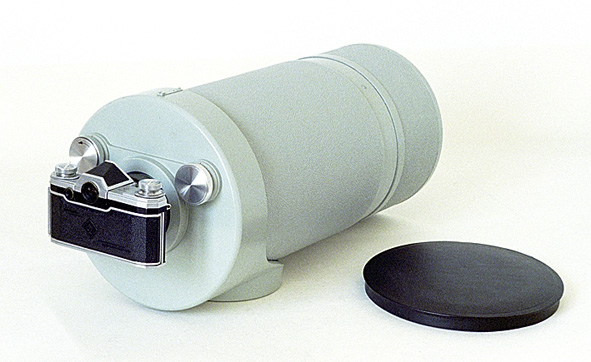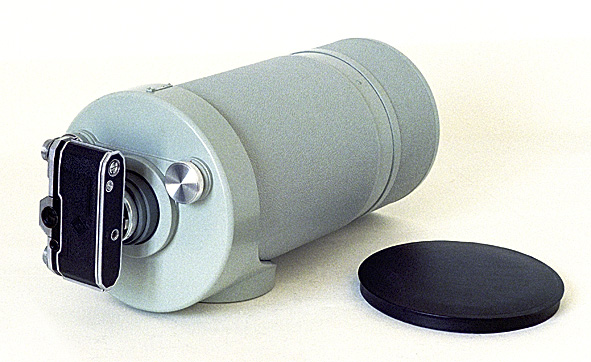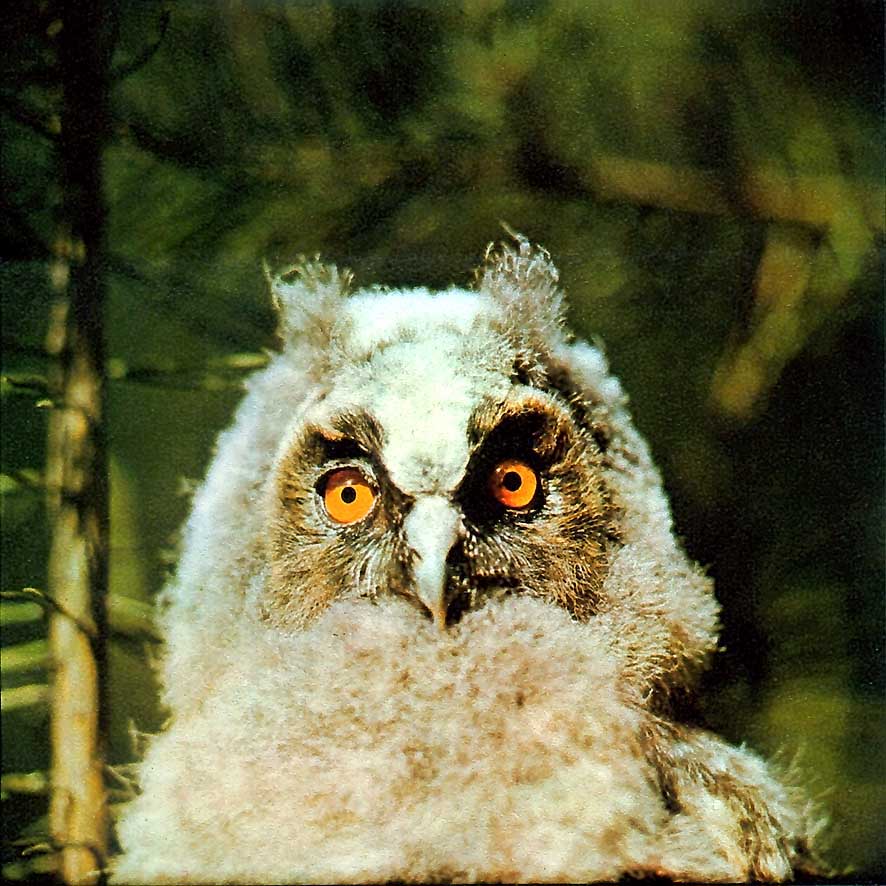
C428-15A |

C428-16A |
Further 1000mm lens tests
Part 1
There are at least three obvious ways to obtain this focal length:
Problems when working with extremely long focal-length lenses
Focussing
It is extremely difficult to focus with long lenses in the range
1000-1200mm,
even with the Rollei focussing screen in the camera. This
screen
increases viewfinder brightness, but the rangefinder wedges are
not designed
to work with such long lenses, and most of the time one half of
the wedges
blacks out. Occasionally it is possible to move ones eye
round the
viewfinder eyepiece and find a place where both halves of the
rangefinder
wedges are visible, but this usually disappears after a second or
so, with
the movement of ones eye.
In consequence, there was a much higher number of out-of-focus shots than is normal with lenses up to a focal length of, say, 300mm. Perhaps one shot in four was not acceptably sharp, so some tests were repeated on a subsequent occasion.
Depth of field
To this problem is added the extremely shallow depth of field of
such
long lenses. It therefore becomes desirable to stop down the
aperture
in order to increase depth of field but this is of course
impossible
with mirror lenses.
Movement
Such powerful lenses magnify the image by 12.5 to 15 times more
than
the 80mm standard lens (for 1000mm and 1200mm,
respectively). With
any movement by the camera or the subject magnified so greatly,
the highest-possible
shutter speed is needed ideally 1/1000 of a second.
Naturally,
this will limit the degree of stopping-down possible, except in
the brightest
conditions and with the fastest film.
Tripod
Most tripods, even those of medium size, are not up to the task of
holding a 1,000mm lens steady enough at anything slower than about
1/500
of a second and on the grounds of weight and size alone, the
1000mm Carl
Zeiss Spiegelobjektiv requires an especially sturdy tripod.
NEW
February 2008: To read a report on a sturdier tripod for
these longer
lenses, click here.

C428-15A |

C428-16A |
Choice of film
Because of all of these factors, it is advisable to use a
higher-speed
film. For the 500-600mm tests and some of the 1000-1200mm
tests,
Fuji NPC 160 film was used, but it was necessary to re-shoot some
tests
at a later date, and on this occasion only Fuji NPH 400 was
available.
The film used is indicated with each shot.
Why bother with a
1000mm lens,
then?
The truth of the matter is that many probably most
photographers
will never miss not having such a long lens. But others will
never
be able to achieve the results they seek without one. Into
this category
might come:

This picture adorns the front of a Carl Zeiss Jena 1000mm
brochure
produced in 1975.
The darkening of the upper corners observed in my tests is still
there
but not objectionable in this shot.
The darkening of the lower edge also observed in my tests is
somewhat
more visible,
but could easily be cropped out.
Prevailing weather
conditions
On the subsequent occasion when some test shots were repeated,
there
also light cloud behind the cranes, which is why the sky is not
the same
shade of deep blue as in the earlier shots.
I apologise for the introduction of two variables (change of film
and
of weather) with the later shots, but this was unfortunately
unavoidable.
In any case, it does not detract from our ability to assess the
coverage,
resolution and colour fringeing (or absence thereof) with these
lenses
and combinations of lens + converter. Whats more, with such
extremely
long focal lengths the fast film speed is more likely to be
needed, to
give the highest-possible shutter speeds (1/1000 would be
desirable).
Test criteria
I have appreciated receiving feedback on the 500mm and 600mm tests
published about six months ago. One person has said that my
test
criteria are too harsh; after all, what counts is obtaining
satisfactory
results at normal degrees of enlargement, whereas I have
used extreme
degrees of enlargement in evaluating resolution and chromatic
aberrations.
This is a very valid point. However, for the sake of
comparability
I have used the same criteria in evaluating the results for the
focal lengths
of 1000mm to 1200mm. As indicated with the results of the
previous
tests, My aim in these tests has ... been ... to subject the
lenses used
to stringent tests tests, in fact, which are harder than
those
that they will on most occasions face in normal use. I
believe that
the accompanying images particularly those of the whole frame
will
help readers to form a judgement as to whether or not a given lens
or lens
+ converter combination will meet their requirements.
To go on to the next section, click below.
Further tests of 1000mm & 1200mm
lenses,
Part 2
For the results obtained with the Kilfitt 300mm
Tele-Kilar and the Kilfitt 300mm Pan-Tele Kilar used with the
Kilfitt Multi-Kilar variable converter at the 4ื setting, see here.
To go back to the beginning of the lens tests, click below and
then
choose the focal length that you want to read about.
Back to beginning of lens tests
ฉ TRA November 2007 Latest revision: November 2020